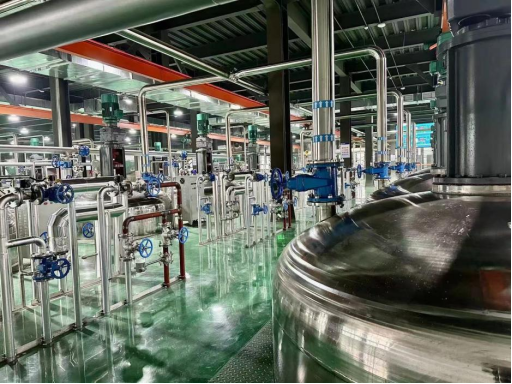In the era of climate change and soil degradation, enhancing [soil health](https://www.farmers.gov/conservation/soil-health) has become a strategic focus for modern agriculture. Healthy soil is the foundation for productive farming, sustainable yields, and environmental balance. While single-product applications such as soil conditioners or biostimulants can be effective, current research and field experience suggest that combining certain soil improvement agents produces synergistic benefits. This blog will focus on how fulvic acid, seaweed extract, seaweed polysaccharides (alginate), and polyglutamic acid (PGA) work together to promote soil conditioning, especially in the rhizosphere, the dynamic interface between plant roots and the soil.
Understanding Soil Health and the Rhizosphere
Soil health refers to the soil's capacity to function as a living system—supporting plant productivity, maintaining environmental quality, and promoting plant and microbial biodiversity. A healthy rhizosphere is crucial in this system. The rhizosphere[1], rich in root exudates and microbial activity, plays a central role in nutrient absorption, disease resistance, and plant signaling. However, intensive agriculture and chemical overuse disturb this delicate balance, leading to soil compaction, salinity buildup, reduced microbial populations, and poor nutrient availability. In this context, integrating targeted biostimulants into soil conditioning strategies can rejuvenate soil health, especially when multiple bioactive substances are used together.
Fulvic Acid: The Nutrient Shuttle
Fulvic acid, a low molecular weight component of humic substances, is highly bioavailable and acts as a powerful natural chelator. It:
Enhances the uptake of minerals and nutrients by plants.
Improves soil structure and water-holding capacity.
Stimulates microbial diversity in the rhizosphere.
Acts as a carrier to bring other molecules deeper into the root zone.
Fulvic acid sets the stage for synergistic soil improvement when combined with other organic compounds and microbial activators.
Seaweed Extract: The Biological Activator
Derived from marine algae, seaweed extract is rich in trace minerals, growth hormones (like cytokinins and auxins), and natural elicitors. Its role in soil health includes:
Stimulating root development and cell elongation.
Increasing the population and activity of beneficial soil microbes.
Supporting plants during abiotic stress such as drought, salinity, and extreme temperatures.
Enhancing the effectiveness of other soil conditioners like fulvic acid and PGA.
Seaweed Polysaccharides (Alginate): The Soil Structure Enhancer
Alginate, a key polysaccharide in brown algae, offers unique benefits when applied as a soil conditioner:
Forms gel-like complexes that improve soil porosity and moisture retention.
Encourages beneficial microbial colonization in the rhizosphere.
Acts as a carbon source for soil microbes, stimulating their proliferation.
Enhances root-soil contact, supporting better nutrient exchange.
When used in combination with fulvic acid and seaweed extract, alginate helps build a fertile micro-environment around roots.
Polyglutamic Acid (PGA): The Water and Nutrient Guardian
PGA, a natural amino acid polymer produced by Bacillus strains, is gaining recognition in soil improvement:
Strongly retains moisture in the soil, reducing irrigation needs.
Improves nutrient retention and slows down nutrient leaching.
Enhances cation exchange capacity, allowing soils to hold more nutrients.
Supports root growth and boosts microbial activity.
PGA’s water-retention and nutrient-buffering properties make it an ideal complement to the more bioactive components like fulvic acid and seaweed extract.
The Synergy: More Than the Sum of Parts
When fulvic acid, seaweed extract, alginate, and PGA are applied together, they form a synergistic soil conditioning system that targets both physical and biological dimensions of soil health:
Soil Structure: Alginate and PGA improve soil porosity, aeration, and water-holding, reducing compaction and erosion risks.
Microbial Activity: Seaweed extract and fulvic acid stimulate microbial life, enhancing nutrient cycling and disease suppression in the rhizosphere.
Nutrient Availability: Fulvic acid chelates and mobilizes nutrients, while PGA prevents nutrient loss, ensuring plants access what they need.
Plant Resilience: This synergy helps crops withstand environmental stress, improves root development, and boosts overall plant vigor.
Field Application and Outlook
Integrated soil conditioning strategies using these four biostimulants are already showing great results in various cropping systems—fruits, vegetables, and cash crops alike. When applied through fertigation or soil drenching, farmers report:
Improved root vitality
Higher soil organic matter
Reduced need for chemical fertilizers
Better crop quality and yield
As soil degradation continues to threaten global agriculture, embracing these natural, synergistic tools is not just an option—it’s a necessity.
In the long run, investing in soil health through intelligent, science-based soil improvement strategies will offer greater sustainability, higher returns, and a healthier planet.




